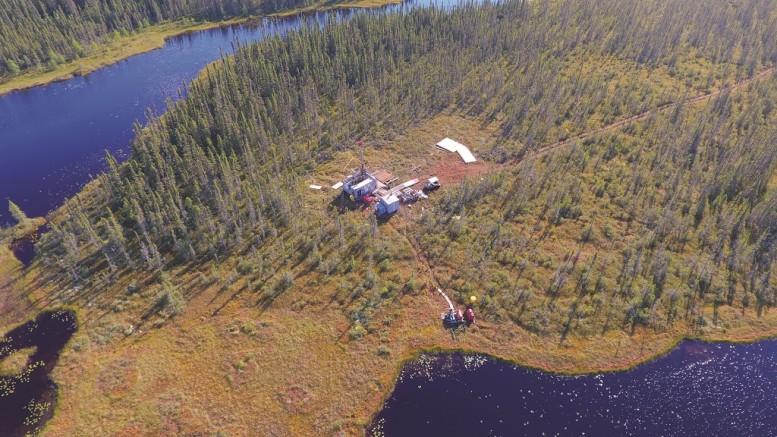It’s the first bit of genuinely good news about Ontario’s Ring of Fire mineral district in five years: the Ontario government has pledged “support” and provincial funding to build two roads into the fledgling mining camp in the James Bay lowlands that would also link previously isolated First Nations communities in the area to the province’s all-season road network.
Ontario Premier Kathleen Wynne made the statement on Aug. 21 in Thunder Bay, Ont., flanked by three of her ministers: Indigenous Relations Minister David Zimmer; Northern Development and Mines Minister Michael Gravelle; and Minister of Municipal Affairs Bill Mauro.
The announcement was made with the chiefs of the Marten Falls, Webequie and Nibinamik First Nations, which would be most affected by the roads.
Marten Falls Chief Bruce Achneepineskum and Webequie Chief Cornelius Wabasse attended the announcement, as did Noront Resources president and CEO Alan Coutts.

Ontario Premier Kathleen Wynne speaking in Thunder Bay, Ont., on Aug. 21, 2017, in support of building a road to the Ring of Fire mineral district in the James Bay Lowlands. Credit: TBNewsWatch.
“What we set out to do was work in partnership with First Nations as we move forward to make this very, very important investment in infrastructure that will allow for the development of this resource,” Wynne said. “But it will mean much more to the communities than that.”
Wynne said “there has been criticism … that we weren’t moving quickly enough. And I want to be clear that our commitment to this project has never been in doubt. I’ve always maintained that we are going to make this investment. But because there was a careful process, a thoughtful process [and] many partners working together, we now have a plan and an ability to move forward in a partnership that would not have been possible if we had not taken that time. And that has been our objective all along.
“The truth is, there are not a lot of examples of resource development and benefit sharing with First Nations in Canada. We can’t point to dozens and dozens of success stories. There are some, but they are not necessarily the rule. So we’re finding our way together, we’re learning together and we’re reinventing what that kind of partnership can mean. That is why we’ve always put that partnership at the top of the list.”

Map of proposed all-season roads (in pink) into Ontario’s Ring of Fire mineral district. Credit: Government of Ontario.
A new east–west road will connect the Nibinamik and Webequie First Nations to the provincial highway network north of Pickle Lake, and continue from Webequie to the Ring of Fire towards Noront’s relatively modest but high-grade Eagle’s Nest nickel-copper-platinum group metals project.
The second road would be a north–south community access road planned for construction by the Marten Falls First Nation, which could expand northwards to the Ring of Fire to help develop any future larger-scale chromite mining.
“We know the Ring of Fire would be a game changer for communities in the region, and quite frankly, an opportunity for the whole province,” Wynne said. “It’s why we put a billion dollars on the table to support its development, but we knew that it was not enough to cut a cheque. We’re making this investment in a way that blends cultural and environmental considerations with regulatory requirements.”
An environmental assessment of both road projects will begin by January 2018, with construction in 2019, pending all necessary approvals.
Noront says this time frame will help it advance predevelopment work and “ready itself” for the three-year construction of the Eagle’s Nest mine, with CEO Coutts describing the road announcement as a “major step forward that will re-energize development of the Ring of Fire region.”
There are other First Nations in the area that have not signed on to the road agreement, but Premier Wynne said communities are welcome to come aboard when ready, and that the provincial government would work with them at their own pace.


Be the first to comment on "Editorial: Ontario gov’t to fund road to Ring of Fire, nearby First Nations"